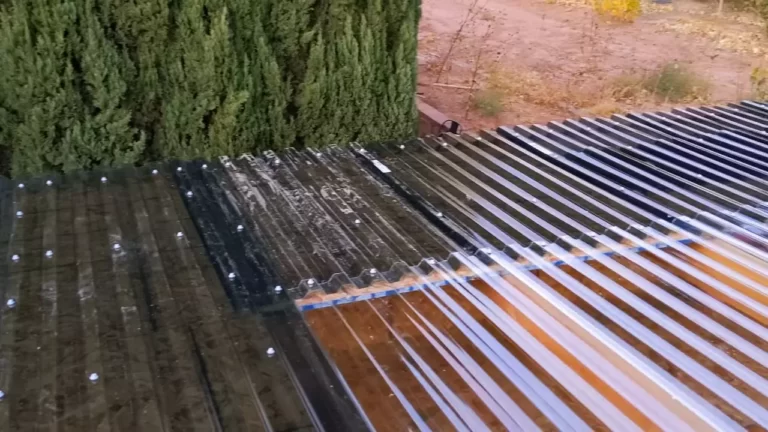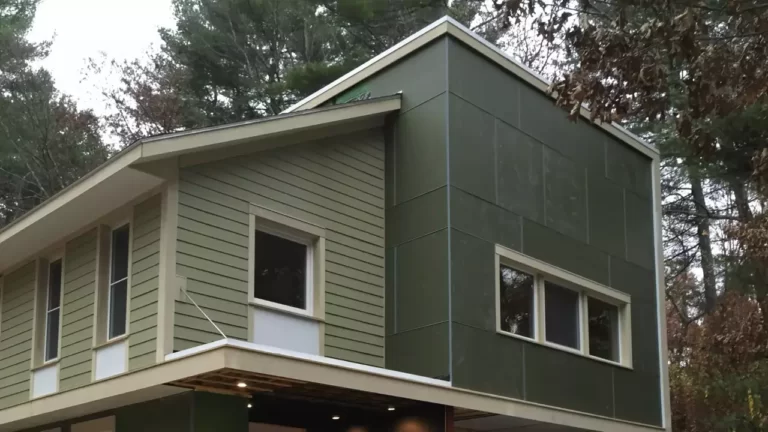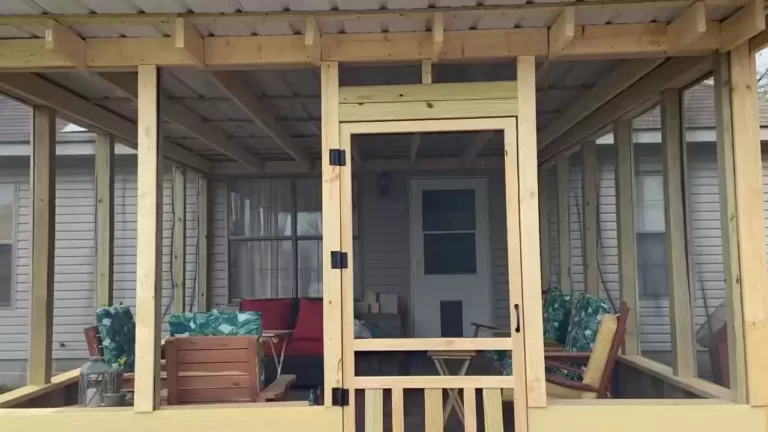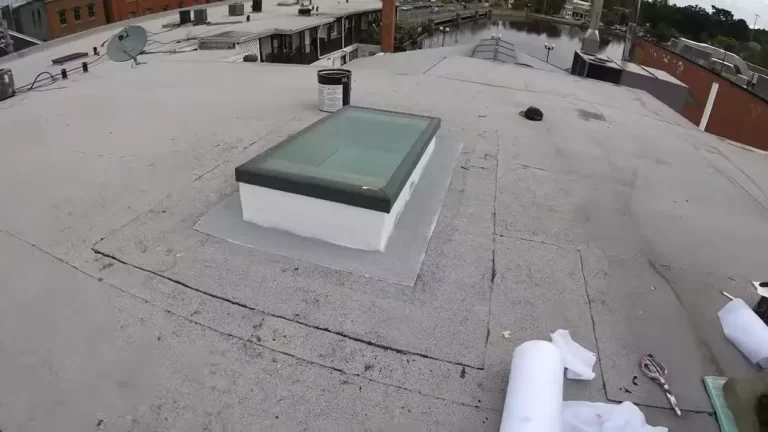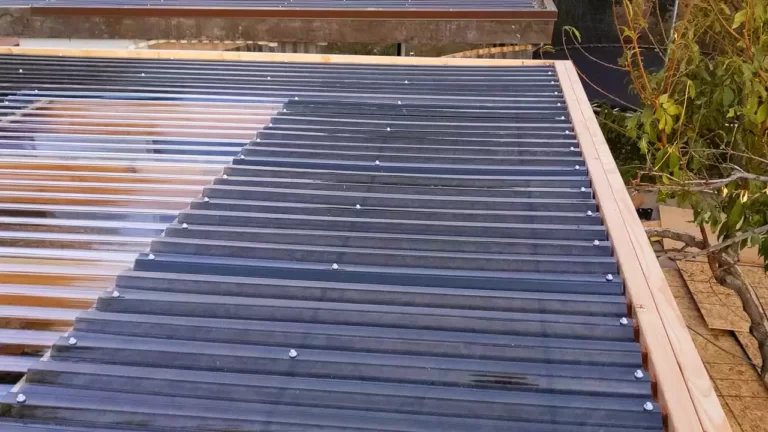How to Install Rv Roof Vent Cover?
To install an RV roof vent cover, first, you need to remove the old cover and clean the area thoroughly. Then, place the new cover over the vent opening and secure it in place using the provided hardware.
Factors To Consider When Choosing An Rv Roof Vent Cover
When it comes to selecting the right RV roof vent cover, there are several factors that you need to take into consideration. Your choice can impact not only the airflow within your RV, but also the overall comfort and functionality of your living space. To ensure you make an informed decision, consider the following factors when choosing an RV roof vent cover:
Material options for RV roof vent covers
The material of the roof vent cover plays a crucial role in its durability, insulation, and resistance to weather elements. There are various material options available, each with its own set of advantages and disadvantages. Here are some popular materials used for RV roof vent covers:
- Plastic: Plastic vent covers are lightweight, affordable, and resistant to UV rays. They are easy to install and maintain, making them a popular choice among RV owners.
- Aluminum: Aluminum covers are known for their durability and corrosion resistance. These covers can withstand extreme weather conditions and offer better insulation compared to plastic covers.
- Polyethylene: Polyethylene covers are highly resistant to cracking, impacts, and UV rays. They are lightweight, yet durable, making them an excellent choice for long-lasting protection.

Size and compatibility considerations
When choosing an RV roof vent cover, it is crucial to ensure that it is compatible with your specific RV model and vent size. An ill-fitting cover can compromise the effectiveness of the vent and may even cause leakage issues. To determine the correct size, measure the dimensions of your existing vent or consult your RV manufacturer’s specifications. Additionally, consider the shape of the cover to ensure it fits snugly over the vent.
Additional features to look for
To enhance the functionality and convenience of your RV roof vent cover, there are some additional features worth considering:
- Removable screens: Look for a cover that includes removable screens to protect your interior from insects and debris while still allowing airflow.
- Automatic opening and closing: Some vent covers offer automatic opening and closing mechanisms, allowing you to adjust the airflow without the hassle of manual operation.
- Rain sensors: Certain advanced covers come with rain sensors that automatically close the cover when it detects rain, preventing water from entering your RV.
- Insulation: If you frequently travel to areas with extreme temperatures, consider a vent cover with insulation to help regulate the interior temperature of your RV.
By considering these factors and carefully selecting the right RV roof vent cover, you can ensure proper ventilation, protection, and comfort within your recreational vehicle. Take your time, analyze your needs, and make an informed decision based on the materials, size, compatibility, and additional features that best suit your requirements.
Benefits Of Installing An Rv Roof Vent Cover
Installing an RV roof vent cover is a smart investment that can make a world of difference in the overall comfort and wellbeing of your RV. Not only does it help protect the interior from rain, debris, and pests, but it also allows for better ventilation and airflow, reducing condensation and moisture buildup. Let’s dive deeper into each of these benefits.
Protecting the RV interior from rain, debris, and pests
One of the primary advantages of installing an RV roof vent cover is the added protection it offers to the interior of your RV. Whether you’re parked under a tree or caught in a sudden rainstorm, a vent cover acts as a shield, keeping rainwater and debris from entering the vent. This means you can enjoy fresh air and natural light without worrying about water damage or unwanted critters finding their way inside.
Allowing for better ventilation and airflow
Proper ventilation is crucial for a comfortable RV experience. An RV roof vent cover facilitates better airflow by allowing air to constantly circulate through the vent, even when it’s raining or windy outside. This means you can keep your RV well-ventilated and fresh while minimizing stuffiness and odors that can accumulate when the vent is closed. Plus, improved airflow can help regulate the interior temperature, keeping it cooler during hot summer days.
Reducing condensation and moisture buildup
Condensation and moisture buildup are common issues in RVs, especially in humid environments or during colder seasons. However, with an RV roof vent cover, you can significantly reduce these problems. By keeping the vent open, the cover allows for excess moisture to escape, preventing condensation from forming on the interior surfaces. This helps maintain a healthier and more comfortable environment inside your RV, reducing the risk of mold and mildew growth.
Overall, installing an RV roof vent cover is a simple yet effective way to enhance your RV experience. It provides essential protection against rain, debris, and pests while promoting better ventilation and airflow. Additionally, it helps combat condensation and moisture buildup, ensuring a fresher, dryer, and more enjoyable interior. Don’t underestimate the benefits of this small addition that can make a big difference in your RV travels.

Required Tools And Materials
Installing an RV roof vent cover is a simple and effective way to enhance the ventilation and airflow inside your RV. To successfully complete this installation, you will need a few essential tools and materials. In this section, we will outline the list of tools and materials required for a smooth and hassle-free installation process.
List of tools needed for installing an RV roof vent cover
- Screwdriver
- Drill
- Tape Measure
- Caulking Gun
Having the right tools is crucial to ensure that the installation process runs smoothly. A screwdriver is required to remove the existing vent cover and secure the new one in place. The drill will be useful for creating holes where necessary to fix the cover securely. A tape measure is essential for accurately measuring the dimensions of the roof vent and cover, ensuring a proper fit. Lastly, a caulking gun is needed for sealing any gaps or openings to prevent water leakage.
Materials required for a successful installation
- RV Roof Vent Cover
- Screws
- Butyl Tape
- Sealant or Silicone
An RV Roof Vent Cover: You’ll need a cover specifically designed for RV roof vents. These covers are typically made of durable and weather-resistant materials like plastic or acrylic, offering protection against UV rays and preventing rainwater from entering the RV.
Screws: Stainless steel screws are recommended as they are corrosion-resistant and provide a secure fastening of the vent cover to the roof of your RV.
Butyl Tape: This waterproof and flexible tape is used for creating a watertight seal and preventing leaks around the vent cover.
Sealant or Silicone: Applying a bead of sealant or silicone around the edges of the vent cover ensures an airtight and watertight seal, protecting your RV from water damage.
By preparing and gathering all the necessary tools and materials beforehand, you’ll streamline the installation process and minimize any disruptions to your RV’s ventilation system. The next section will cover the step-by-step instructions for installing the RV roof vent cover, so stay tuned!
Ensuring Safety Before Installation
Before you begin the installation process of your RV roof vent cover, it is crucial to prioritize safety. Taking the necessary precautions will not only help you avoid accidents or injuries but also ensure a smooth and successful installation. In this section, we will outline two key steps to help you ensure safety before embarking on the installation journey.
Disconnecting any power sources
Prior to installing the RV roof vent cover, it is important to disconnect any power sources that may be connected to the existing vent. This will prevent any potential electrical mishaps and keep you safe throughout the installation process.
In order to disconnect the power sources, follow these simple steps:
- Turn off the power supply – Locate the relevant circuit breaker in your RV’s electrical panel and switch it off to cut off the power supply to the vent.
- Confirm power disconnection – After turning off the breaker, it is essential to verify that the power is indeed disconnected. You can do this by testing the vent switch and making sure it does not activate.
Taking necessary precautions to avoid accidents or injuries
When dealing with any DIY installation project, safety should never be compromised. Installing an RV roof vent cover is no exception. Here are some key precautions to follow to ensure your safety:
- Wear protective gear – Prior to starting the installation process, put on the necessary protective gear. This includes safety goggles, gloves, and a dust mask to safeguard yourself from potential hazards such as debris or dust.
- Use a stable ladder – To gain access to the roof, make sure you use a sturdy and secure ladder. Ensure the ladder is placed on a level surface and properly anchored for stability.
- Be cautious of the surroundings – While working on the roof, be mindful of your surroundings and any potential hazards. Steer clear of power lines, be cautious of the roof’s condition, and avoid slippery surfaces.
- Work with a partner if possible – Having an extra set of hands can greatly enhance safety during the installation process. Consider working with a partner who can assist and provide support as needed.
By following these safety measures, you can minimize the risk of accidents or injuries and create a secure environment for the installation of your RV roof vent cover.

Removing The Old Roof Vent Cover
When it comes to RV maintenance, one important task is replacing the roof vent cover. Over time, these covers can become damaged or worn out, leading to leaks and drafts inside your RV. In this guide, we will walk you through the process of removing the old roof vent cover so you can install a new one and ensure that your RV remains comfortable and secure.
Inspecting the existing vent cover
Before you begin removing the old roof vent cover, take a moment to inspect its condition. Look for any cracks, holes, or signs of damage that may have contributed to the need for a replacement. Additionally, check the surrounding area of the vent for any debris or buildup that might hinder the removal process.
Removing any screws or fasteners holding the old cover in place
Next, you’ll need to locate and remove any screws or fasteners that are securing the old cover to your RV’s roof. These screws are typically located around the edges of the vent cover, but they can vary depending on the model of your RV. Use a screwdriver or a power drill with the appropriate bit size to carefully remove each screw. Make sure to keep track of them so you can easily install the new cover later on.
Carefully detaching the cover from the RV roof
Once all screws and fasteners are removed, it’s time to detach the old cover from the RV roof. Begin by gently prying the edges of the cover away from the roof using a flathead screwdriver or a putty knife. Be cautious not to apply too much force to avoid damaging the roof or the surrounding area. Gradually work your way around the cover, ensuring that it is completely free from any attachments.
If you encounter any resistance while detaching the cover, it may be helpful to apply a lubricant such as silicone spray to loosen any stubborn parts. Take your time and be patient during this step to avoid causing any unnecessary damage.
Once the old roof vent cover is completely detached, set it aside for disposal. You are now ready to install the new cover, but before doing so, it’s a good idea to clean and inspect the area where the old cover was attached. Remove any debris or residue left behind to ensure a smooth installation process.
In conclusion, removing the old roof vent cover is a straightforward process that requires careful inspection, removal of screws or fasteners, and gentle detachment from the RV roof. By following these steps, you’ll have a clean slate to install a new cover and protect your RV from the elements.
Cleaning And Preparing The Roof Surface
Before installing an RV roof vent cover, it is crucial to ensure that the roof surface is clean and prepared. This step is essential to create a solid foundation for the installation process and ensure a long-lasting and effective vent cover. Below are the steps you should follow to clean and prepare the roof surface:
Removing any debris or dirt from the roof surface
The first step is to remove any debris or dirt that may have accumulated on the roof surface. This can include leaves, twigs, dust, or any other loose particles. Clean off the surface using a broom or a soft-bristle brush to avoid scratching the roof material. Ensure that the entire area is free from debris to prevent it from interfering with the installation or causing issues in the future.
Ensuring a clean and dry area for the installation
Once the debris is cleared, the next step is to ensure that the roof surface is clean and dry. This is important as moisture or dirt can affect the adhesion of the sealant or adhesive used in the installation process. Use a mild detergent mixed with water to gently clean the surface, removing any dirt or stains. Rinse thoroughly with clean water to ensure no residue is left behind. After cleaning, allow the roof surface to dry completely before proceeding with the installation.
It is worth mentioning that some roof materials may require additional steps or specific cleaning solutions. Check the manufacturer’s instructions or consult a professional if you are unsure about the cleaning process for your specific RV roof material.
By following these steps and ensuring a clean and prepared roof surface, you are setting the foundation for a successful RV roof vent cover installation. Taking the time to clean and prepare the surface will result in a secure and reliable vent cover that will protect your RV’s interior from the elements and enhance its overall ventilation.
Positioning And Aligning The New Roof Vent Cover
Properly positioning and aligning the new roof vent cover is crucial to ensure a secure fit and proper functioning. By following the right steps, you can easily install the cover and protect your RV from rain, debris, and excessive heat. In this section, we will guide you through the process of aligning the new cover with the vent opening, ensuring a secure fit and placement.
Properly aligning the new cover with the vent opening
- Start by removing the old roof vent cover. Use a screwdriver or a power drill to unscrew the fasteners that hold the cover in place. Carefully lift the old cover off the vent opening and set it aside.
- Clean the vent opening thoroughly to ensure a clean and smooth surface for the new cover. Remove any debris, dirt, or old sealant that may hinder the proper alignment and fit of the new cover.
- Position the new roof vent cover over the vent opening. Make sure that it is centered and aligned properly. Check that the screw holes on the cover align with the holes on the vent opening.
- Use a level to ensure that the cover is perfectly aligned. This step is crucial to prevent any water leakage or damage. Adjust the position of the cover if necessary until it is perfectly level.
- Once you are satisfied with the alignment, use a marker or a sharp object to mark the screw hole locations on the vent opening. This will guide you when drilling the holes for the screws.

Ensuring a secure fit and proper placement
- Pre-drill the screw holes using a drill bit that matches the size of the screws provided with the new cover. Be cautious not to drill too deeply, as it may damage the roofing material.
- Set the new roof vent cover aside and apply a generous amount of sealant around the vent opening. This will create a waterproof barrier and ensure a secure fit for the new cover.
- Place the new cover back over the vent opening, aligning the screw holes with the pre-drilled holes. Insert the screws into the holes and tighten them with a screwdriver or power drill. Ensure that the screws are secure but not overly tightened, as it can lead to cracks or damage to the cover.
- Once the new cover is securely fastened, inspect the installation to ensure a proper fit. Check for any gaps or unevenness that may compromise its effectiveness. If necessary, make adjustments to achieve a secure and snug fit.
- Finally, clean up any excess sealant or debris from the installation. Remove any protective films or stickers from the new roof vent cover.
With these simple steps, you can successfully position, align, and install a new roof vent cover on your RV. Remember to follow the manufacturer’s instructions and take the necessary precautions to ensure a secure and effective installation.
Securing The New Roof Vent Cover
Once you have chosen and positioned your new roof vent cover, it’s time to secure it properly to ensure a tight and secure installation. This step is crucial to prevent any leaks or damage caused by strong winds or heavy rain. To secure the cover, you can use either screws or fasteners to attach it firmly to your RV roof.
Using screws to attach the cover to the RV roof
If you decide to use screws, make sure they are suitable for outdoor use and won’t rust or corrode over time. Before attaching the cover, carefully mark the screw holes on the roof to ensure an accurate and symmetrical installation. Use a drill with an appropriate-sized drill bit to create pilot holes for the screws. This will prevent the roof from cracking or splitting during the installation process. Once the pilot holes are in place, align the cover over the vent opening and secure it by inserting the screws through the cover and into the pilot holes. Tighten the screws firmly but be cautious not to overtighten them, as it could damage the cover or the roof. Repeat this process for all the remaining screw holes, ensuring an even distribution of screws for maximum stability.
Using fasteners to attach the cover to the RV roof
If you prefer to use fasteners instead of screws, it’s important to choose high-quality and durable fasteners that are designed for outdoor applications. Start by marking the locations for the fasteners on the roof, ensuring they are evenly spaced and aligned with the cover. Use a drill with a suitable-sized drill bit to create holes that will accommodate the fasteners. Insert the fasteners into the holes and tighten them securely using a wrench or pliers. Be careful not to overtighten the fasteners, as it could damage the cover or the roof. Once all the fasteners are in place, give the cover a gentle push to ensure it is firmly attached and doesn’t wobble or move.
Ensuring a tight and secure installation
Whether you choose screws or fasteners to secure the roof vent cover, it’s essential to take extra measures to ensure a tight and secure installation. Regularly inspect the cover to check for any signs of loosening or damage. If you notice any issues, tighten the screws or fasteners accordingly. Additionally, consider applying a layer of sealant around the edges of the cover to create a watertight seal and provide added protection against leaks. Remember, a properly secured roof vent cover will not only enhance the aesthetics of your RV but also safeguard the interior from potential water damage and ensure proper ventilation.
Checking The New Roof Vent Cover
Once you have successfully installed a new roof vent cover on your RV, it is important to check its functionality and ensure there are no gaps or leaks. This step is crucial to prevent any water damage or unwanted drafts inside your vehicle. Here are some simple steps to follow when checking the new roof vent cover:
Confirming proper functionality of the cover
After you have installed the roof vent cover, the first thing you need to do is make sure it is functioning correctly. To do this, open and close the cover a few times to check if it moves smoothly. Ensure that the cover fully opens and securely closes without any obstructions. This step will help you determine if the mechanism is working properly and if any adjustments need to be made.
Ensuring there are no gaps or leaks
Avoiding gaps and leaks in your roof vent cover is essential to maintain a dry and comfortable interior. To check for potential gaps, carefully inspect the edges of the cover to ensure they are snugly fitted against the opening. Look for any signs of daylight passing through, as this could indicate a gap that needs to be addressed. Additionally, check for any cracks or damage in the cover that could potentially lead to leaks during rainfall.
If you notice any gaps or leaks, you should take immediate action to rectify the issue. Depending on the severity of the problem, you may need to adjust the position of the cover, apply sealant or replace the cover entirely. It is always better to address these issues promptly to prevent any further damage.
Regularly checking the functionality and condition of your RV roof vent cover is an important part of maintenance. By taking the time to inspect and address any issues, you can ensure that your cover is providing proper ventilation and protection for your RV’s interior.

Regular Maintenance And Cleaning
Regular maintenance and cleaning are crucial for keeping your RV roof vent cover in optimal condition. Over time, debris can accumulate on the cover, potentially causing damage or obstructing airflow. By following a few simple tips and performing regular cleaning tasks, you can ensure the longevity of your RV roof vent cover.
Tips for preventing debris buildup in the cover
Preventing debris buildup in the RV roof vent cover is essential for its proper functioning. Here are some tips to help you keep your cover clear of debris:
- Trim tree branches: Trim any overhanging tree branches near your RV to minimize the falling of leaves, twigs, or pine needles onto the cover.
- Use a cover or screen: Consider using a cover or screen specially designed for vent covers. These accessories can prevent larger debris from entering the vent and clogging it.
- Keep the RV clean: Regularly clean your RV’s roof to prevent dirt, dust, and other debris from accumulating around the vent cover.
- Be mindful of parking location: When parking your RV, try to choose spots away from trees or areas where debris buildup is more likely.
Cleaning and maintaining the vent cover for longevity
Regular cleaning and maintenance will not only keep your RV roof vent cover looking its best but also help extend its lifespan. Here are some tips to consider:
- Inspect the cover: Regularly inspect the vent cover for signs of damage, including cracks, discoloration, or loose screws. If any issues are found, address them promptly to prevent further damage.
- Clean the cover: Clean the vent cover regularly using a mild soap or detergent and warm water. Gently scrub the surface with a soft brush or sponge to remove any dirt or grime.
- Rinse thoroughly: After cleaning, rinse the cover with water to ensure all soap residue is removed.
- Check for airflow: Ensure proper airflow by verifying that the vent cover opens and closes smoothly. Lubricate hinges if necessary.
By following these tips and incorporating regular maintenance and cleaning into your RV care routine, you can ensure the longevity and optimal functioning of your RV roof vent cover.
Troubleshooting Common Issues
In order to ensure proper ventilation and prevent any damage to your RV, it is important to have a fully functional roof vent cover. However, like any other component, roof vent covers can encounter problems over time. In this section, we will discuss how to identify and troubleshoot common issues with your RV roof vent cover.
Identifying issues with the roof vent cover
Before you can begin troubleshooting, it is important to identify the issues with your RV roof vent cover. By recognizing the problem at hand, you can better understand the necessary steps to resolve it. Here are some common issues you may encounter:
- Cracks or damage: Inspect the roof vent cover for any visible cracks, holes, or other signs of damage. A damaged cover can allow water or pests to enter your RV, leading to further issues.
- Lack of ventilation: If you notice a decrease in airflow or an absence of fresh air within your RV, it could be a sign that your roof vent cover is not functioning properly.
- Noise: Unusual sounds coming from the roof vent cover, such as rattling or squeaking, can indicate a problem with the mechanism or fan.
- Inefficient insulation: If you experience temperature fluctuations or drafts inside your RV, it may be due to poor insulation caused by a faulty roof vent cover.
Troubleshooting steps to resolve common problems
Once you have identified the issue with your RV roof vent cover, it’s time to troubleshoot and find a solution. Here are some steps you can take to resolve common problems:
- Repair cracks or damage: If you discover any cracks or damage to the roof vent cover, it is important to repair or replace it immediately. You can use RV sealant or adhesive to seal minor cracks. For more significant damage, consider replacing the entire cover.
- Clean and lubricate: Over time, debris and dirt can accumulate in the mechanism of the roof vent cover, hindering its smooth operation. Regularly clean the cover and apply lubrication to ensure proper functioning.
- Check the fan: If you are experiencing noise issues, inspect the fan blades for any obstructions or damage. Remove any debris and ensure that the fan is securely attached.
- Inspect insulation: To improve insulation and prevent drafts, check the seal around the roof vent cover. If you notice any gaps or leaks, apply weatherstripping or a foam sealant to create a proper seal.
By following these troubleshooting steps, you can address common issues with your RV roof vent cover and ensure proper ventilation and insulation for your vehicle. Regular maintenance and inspections will help prolong the lifespan of your roof vent cover and provide a comfortable environment for your RV adventures.
Frequently Asked Questions For How To Install Rv Roof Vent Cover
How Do You Install An Rv Roof Vent Cover?
To install an RV roof vent cover, start by removing the old cover if necessary. Then, position the new cover over the vent opening and secure it with screws or clips. Make sure it is tight and sealed properly to prevent any leaks.
What Are The Benefits Of Installing An Rv Roof Vent Cover?
Installing an RV roof vent cover offers several benefits. It helps to improve air circulation inside the RV, reducing stuffiness and odors. It also protects the vent and the area below it from rain, snow, and debris. Additionally, a cover can help to regulate the temperature inside the vehicle, keeping it cooler in hot weather.
Can I Install An Rv Roof Vent Cover Myself?
Yes, you can install an RV roof vent cover yourself. It is a relatively simple process that requires basic tools and some DIY skills. However, if you’re unsure or uncomfortable, it’s always a good idea to consult a professional. They can ensure the installation is done correctly and safely.
Conclusion
Installing an RV roof vent cover is a simple and essential task to enhance air circulation and control moisture inside your RV. With the step-by-step process outlined in this guide, you can easily install a roof vent cover on your own.
Remember to choose the right cover for your specific RV model and follow safety precautions during installation. Enjoy improved ventilation and a more comfortable RV experience!


